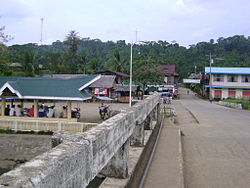
Lanuza, officially the Municipality of Lanuza, is a 4th class municipality in the province of Surigao del Sur, Philippines. According to the 2020 census, it has a population of 13,642 people.

Burgos, officially the Municipality of Burgos, is a 6th class municipality in the province of Surigao del Norte, Philippines. According to the 2020 census, it has a population of 4,185 people.

Del Carmen, officially the Municipality of Del Carmen, is a 5th class municipality in the province of Surigao del Norte, Philippines. According to the 2015 census, it has a population of 18,392 people. The municipality was formerly called Numancia until 1966 when it was changed to its present name. It is located on Siargao Island and home to Sayak Airport, the island's main airport.

General Luna, officially the Municipality of General Luna, is a 5th class municipality in the province of Surigao del Norte, Philippines. According to the 2020 census, it has a population of 22,853 people.
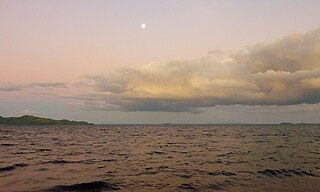
Placer, officially the Municipality of Placer, is a 4th class municipality in the province of Surigao del Norte, Philippines. According to the 2020 census, it has a population of 29,616 people.

San Benito, officially the Municipality of San Benito, is a 6th class municipality in the province of Surigao del Norte, Philippines. According to the 2020 census, it has a population of 5,663 people.

Socorro, officially the Municipality of Socorro, is a 4th class municipality in the province of Surigao del Norte, Philippines. According to the 2020 census, it has a population of 25,942 people.

Tagana-an, officially the Municipality of Tagana-an, is a 5th class municipality in the province of Surigao del Norte, Philippines. According to the 2020 census, it has a population of 17,323 people.
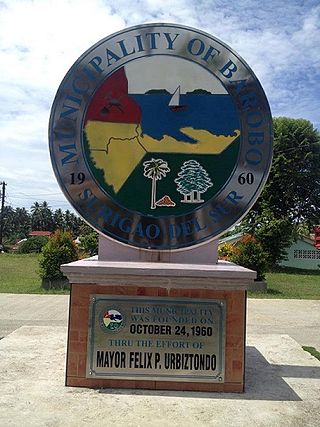
Barobo, officially the Municipality of Barobo is a 3rd class municipality in the province of Surigao del Sur, Philippines. According to the 2020 census, it has a population of 53,146 people.

Cagwait, officially the Municipality of Cagwait, is a 4th class municipality in the province of Surigao del Sur, Philippines. According to the 2020 census, it has a population of 21,747 people.

Carmen, officially the Municipality of Carmen, is a 5th class municipality in the province of Surigao del Sur, Philippines. According to the 2020 census, it has a population of 11,720 people.

Carrascal, officially the Municipality of Carrascal, is a 4th class municipality in the province of Surigao del Sur, Philippines. According to the 2020 census, it has a population of 24,586 people.

Cortes, officially the Municipality of Cortes, is a 4th class municipality in the province of Surigao del Sur, Philippines. According to the 2020 census, it has a population of 17,924 people.
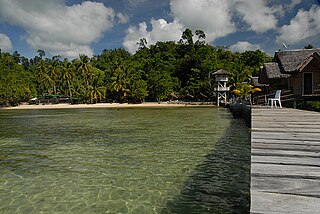
Lianga, officially the Municipality of Lianga, is a 4th class municipality in the province of Surigao del Sur, Philippines. According to the 2020 census, it has a population of 33,869 people.
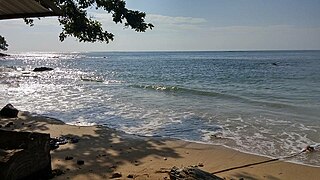
Lingig, officially the Municipality of Lingig, is a 2nd class municipality in the province of Surigao del Sur, Philippines. According to the 2020 census, it had a population of 35,142 people.

Marihatag, officially the Municipality of Marihatag ;, is a 3rd class municipality in the province of Surigao del Sur, Philippines. According to the 2020 census, it has a population of 19,441 people.

San Agustin, officially the Municipality of San Agustin, is a 4th class municipality in the province of Surigao del Sur, Philippines. According to the 2020 census, it has a population of 22,855 people.

San Miguel, officially the Municipality of San Miguel, is a 1st class municipality in the province of Surigao del Sur, Philippines. According to the 2020 census, it has a population of 41,809 people.

Tagbina, officially the Municipality of Tagbina, is a 2nd class municipality in the province of Surigao del Sur, Philippines. According to the 2020 census, it has a population of 41,051 people.

Tago, officially the Municipality of Tago, is a 2nd class municipality in the province of Surigao del Sur, Philippines. According to the 2020 census, it has a population of 39,831 people.
